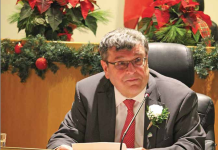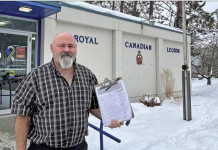Whether you’re building or renovating, you want to be sure you can keep what you’ve paid for. A survey will ensure you’ve drawn accurate boundary lines in the plan before you begin.
“A licensed Ontario Land Surveyor [OLS] is the only professional in the province of Ontario who is able to determine the legal limits of a property,” said Rodney Geyer, OLS.
“Without knowing your limits you cannot ensure that your new building is located within the bylaw setbacks, or even guarantee that it is on your property.”
Such guidance is so important that providing it most effectively has led Rodney, his son Adam Geyer and Haliburton’s Chris Bishop to become partners to better support clients through their combined expertise, experience and historical records.
Launched in June, new company Bishop Geyer Surveying Inc. in Haliburton incorporates the Bancroft arm of Geyer Surveys (Rodney Geyer Ontario Land Surveyor Inc., created in 2006) and Greg Bishop Surveying and Consulting Ltd. Greg Bishop, Chris’s father, operated from the 1970s until his retirement in 2020, except for a term with the Ontario Municipal Board until 2004. Rodney has served as the firm’s OLS since Greg’s retirement.
Geyer historical records include those of earlier firms M.J. McAlpine Surveying and R.H. Geyer Surveying starting in 1988. Bishop’s historical records include those of Chris’s grandfather, Curry, who began surveying in the late 1950s, and of several companies as far back as The Canadian Land & Emigration Co. (1862).
Surveys are required whenever the legal limit or boundary of a property must be determined. This can include commercial building projects, severances, infrastructure development, subdivisions, condominiums and road allowance closings.
“The scope of a project is the ultimate driver of time and complexity,” noted Rodney.
“The survey process begins always with an estimate and determination of what is necessary. A survey is not one size fits all, and the scope of each project will be focused on a specific goal. That is not to say that it won’t change based on what we find, but it has to start somewhere.”
The surveyors then research the property’s history, including current and past deeds for the client’s property and for neighbouring properties. From there, field work locates existing monuments (survey markers) and checks their mathematical relationship to existing monuments on the neighbouring properties. Depending on the age of the previous survey, this step can take some time to complete. A report is then prepared, or a plan is produced if required.
Survey duration can range from a few hours for a water boundary setback to months or years for final plans to be approved and registered with the province, especially if property monuments have been destroyed over the years.
Ultimately, surveyors ensure that every party to a plan gets the real deal.
“As surveyors we are an independent and impartial third party when it comes to boundaries,” said Rodney.
“As much as we advocate for our client, we advocate equally for the neighbouring parties … Surveyors cannot move or bend limits in the field to suit a situation.”




